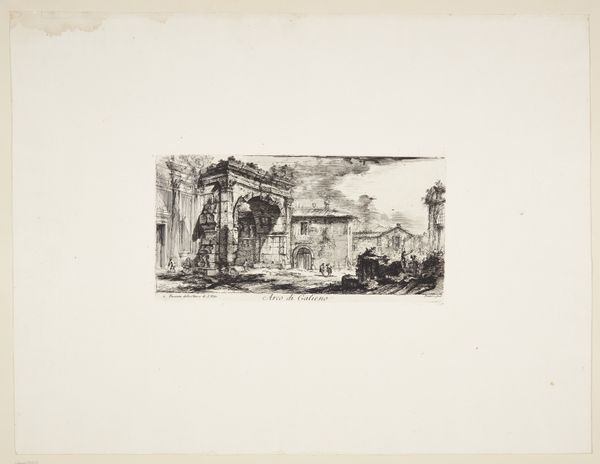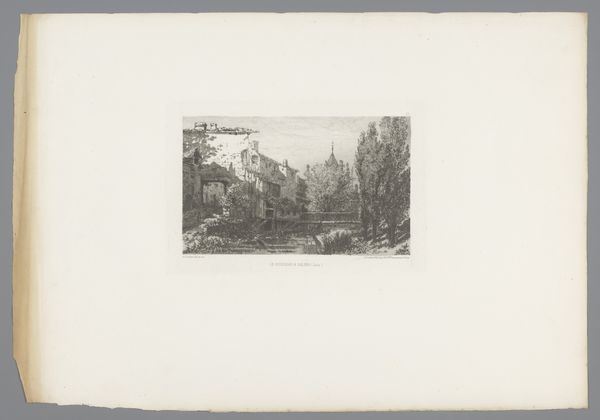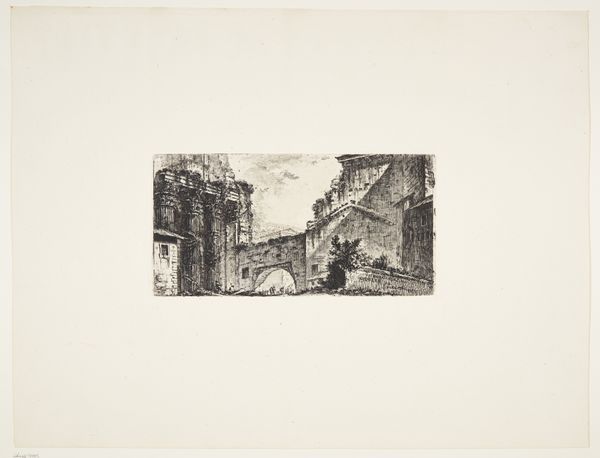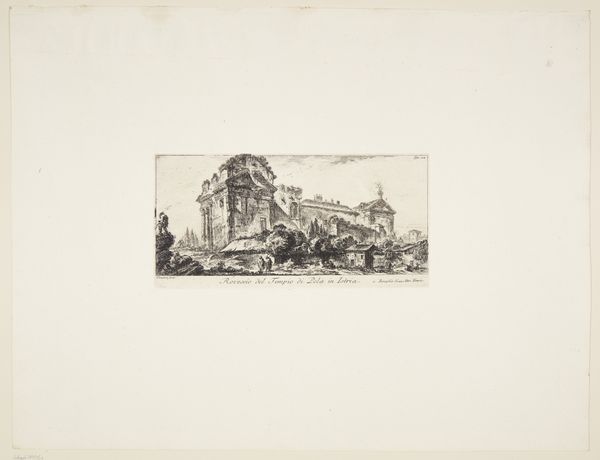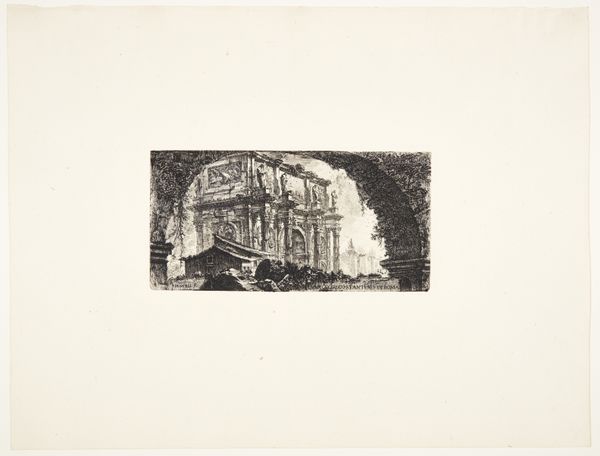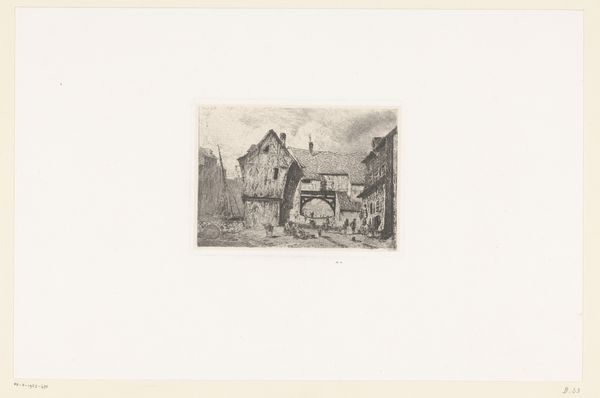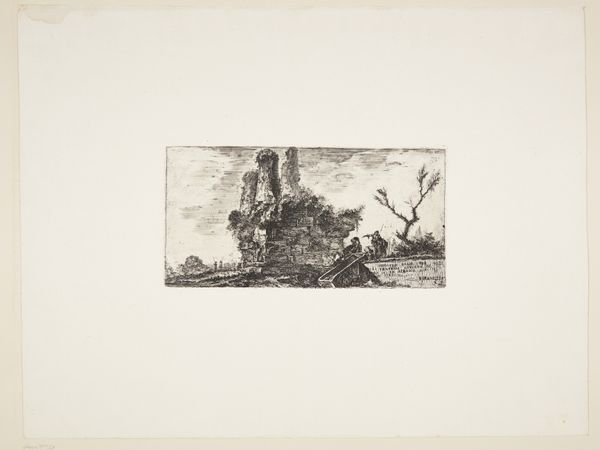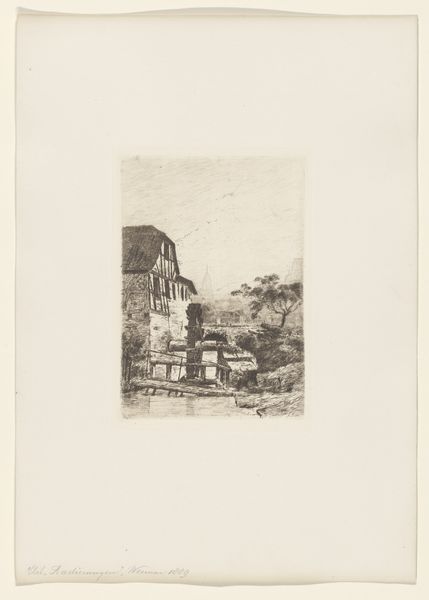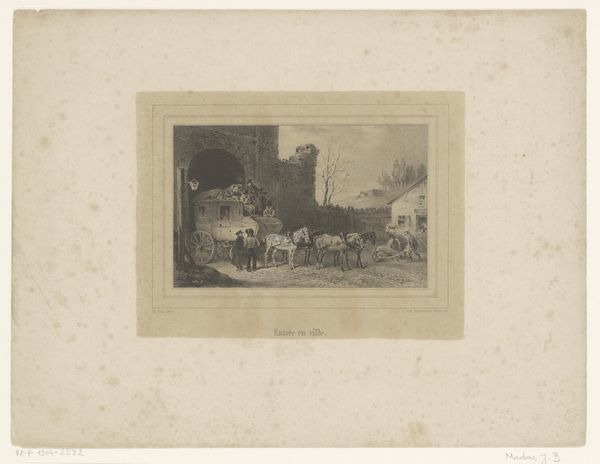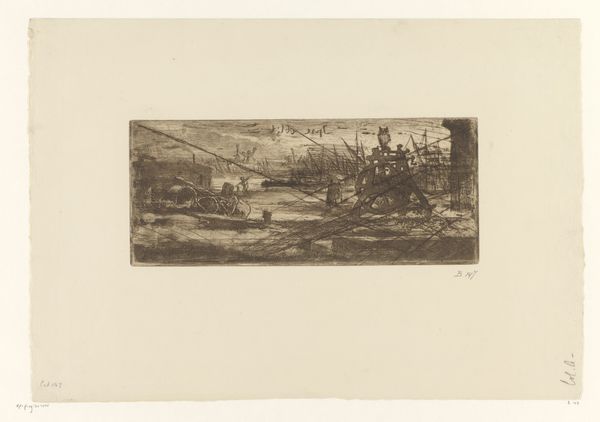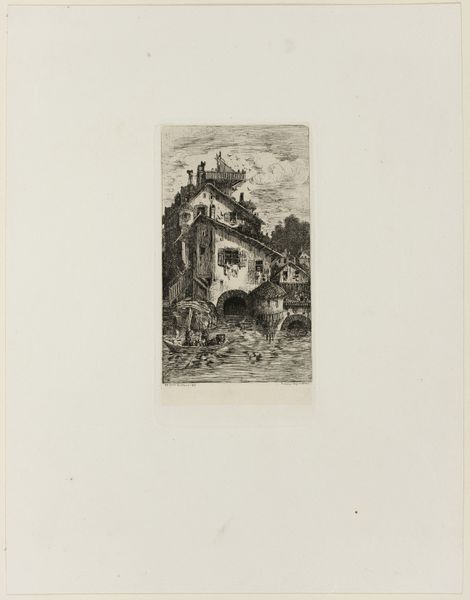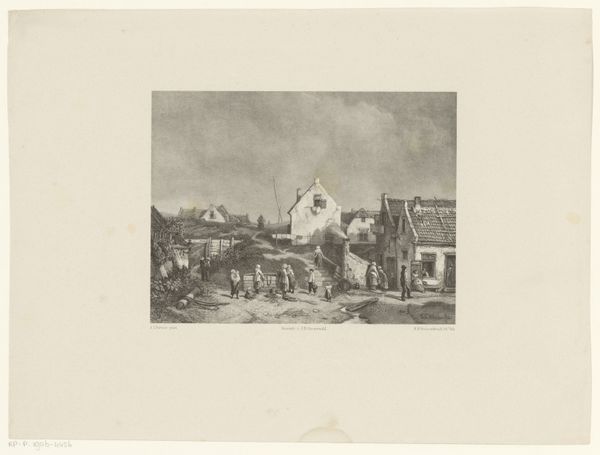
Dimensions: 138 mm (height) x 271 mm (width) (plademaal)
Editor: This is "The Tomb of the Scipios," an etching and engraving by Giovanni Battista Piranesi from 1748. I'm struck by the contrast between the detailed architecture and the rather desolate landscape. How do you see this piece, considering its materials and context? Curator: For me, it's essential to consider Piranesi's printmaking practice within the 18th-century market for antiquities. These weren’t simply artistic expressions; they were commodities. Etchings like this facilitated the *consumption* of Roman history, transforming archaeological sites into reproducible images, sold and collected widely. The materials – the copper plate, the paper, the ink – and the labor involved speak to the industrialization of art production, wouldn’t you agree? Editor: That’s an interesting point, framing it as part of an early art market. Does the specific location depicted, the Tomb of the Scipios, then take on an additional layer of meaning? Curator: Absolutely. The Tomb itself represents a physical site, subject to decay and alteration over time. Piranesi’s choice of etching and engraving – reproducible media – freezes it in a moment, transforming it into an object of study and desire. This contrasts sharply with, say, a painted version, where the aura of the singular artwork remains potent. By looking at the lines, the labor they represent, we see not only Rome, but the networks of production. Editor: So, rather than simply romanticizing Roman history, Piranesi's prints engage with a more complex reality of cultural production and consumption. Curator: Exactly. And the apparent romantic desolation underscores this point. The scene feels less like an idealized vista and more like a snapshot of a resource – a commodity in the making, its cultural value intertwined with its material form and distribution. The "Tomb" transforms from a place of historical significance into a marketable asset through material processes. Editor: I hadn't thought of it in those terms before. I'm now understanding the piece's deeper social context. Curator: By considering the materials, the process, and the economic conditions surrounding its creation, we move beyond aesthetics to grasp the multifaceted nature of Piranesi's art and its position within the cultural landscape of his time.
Comments
No comments
Be the first to comment and join the conversation on the ultimate creative platform.
